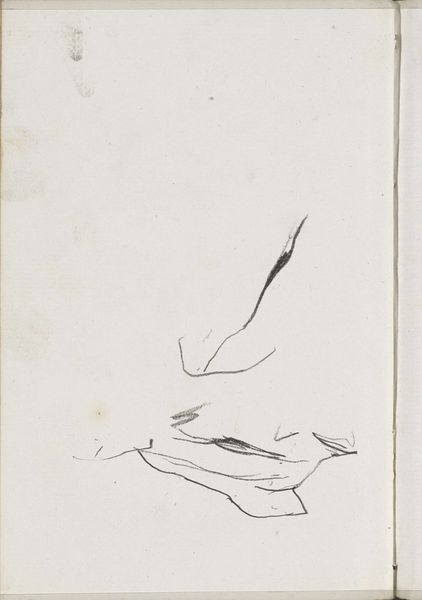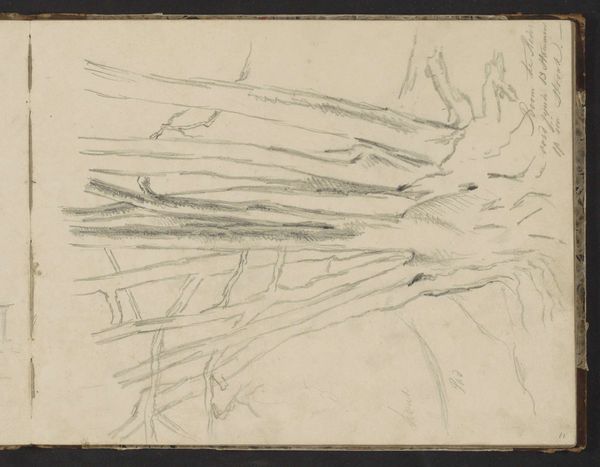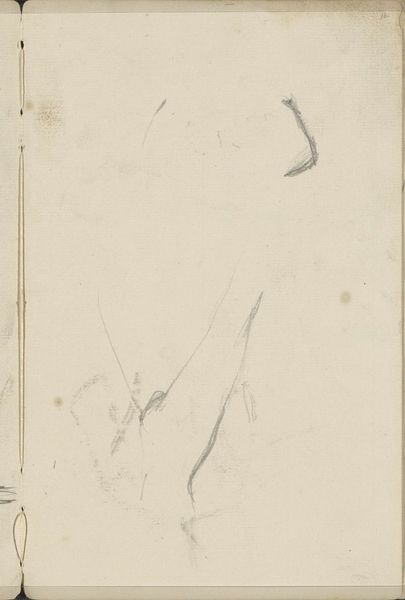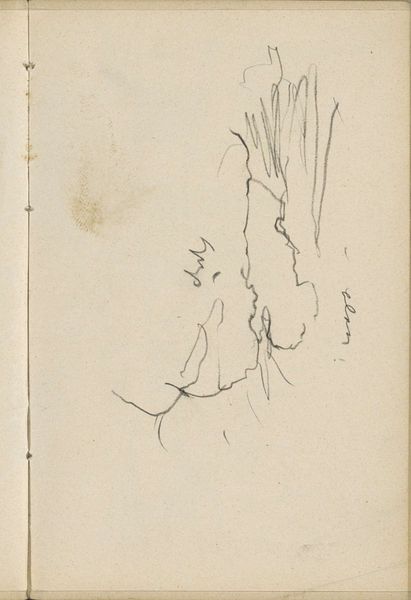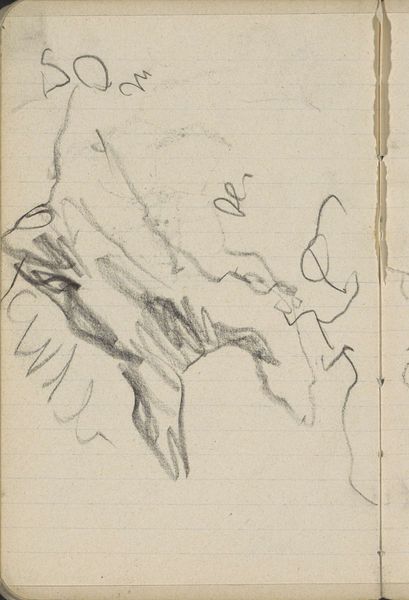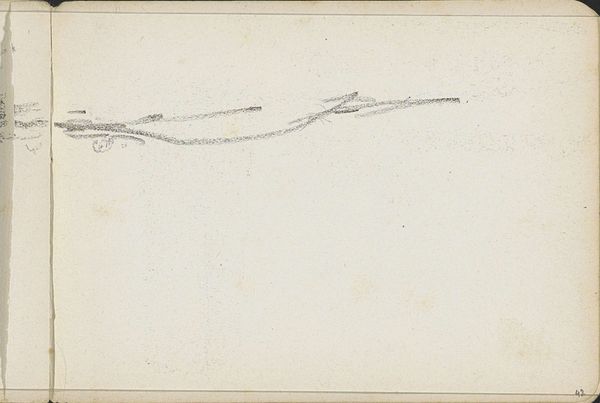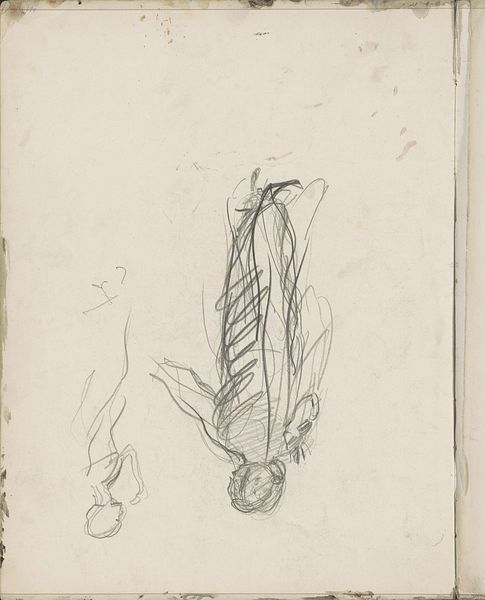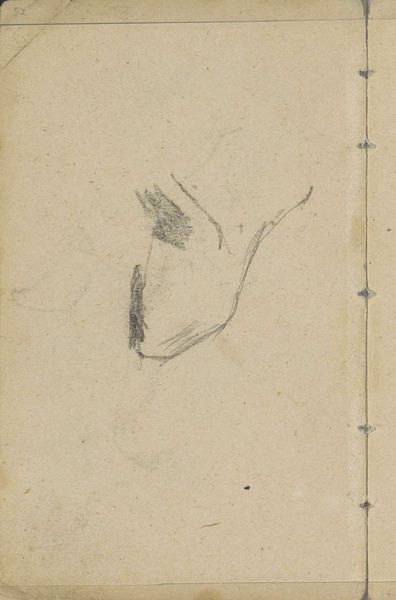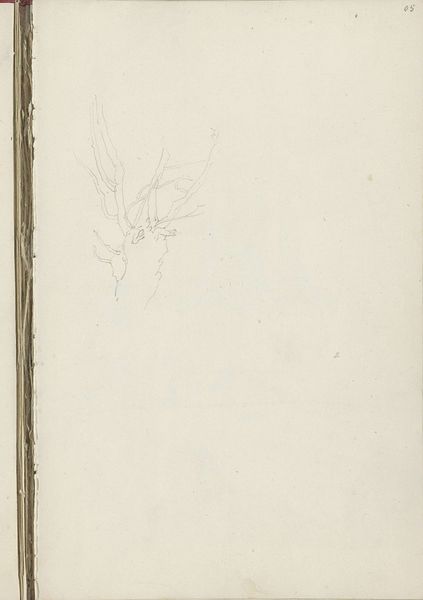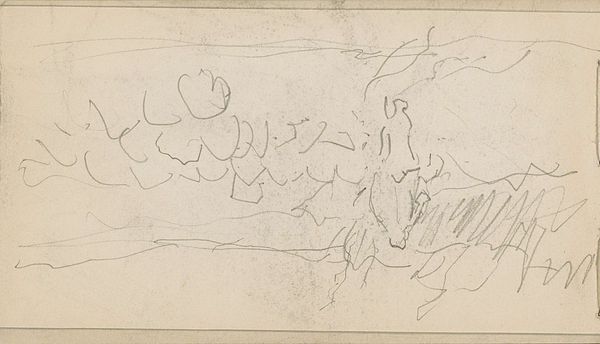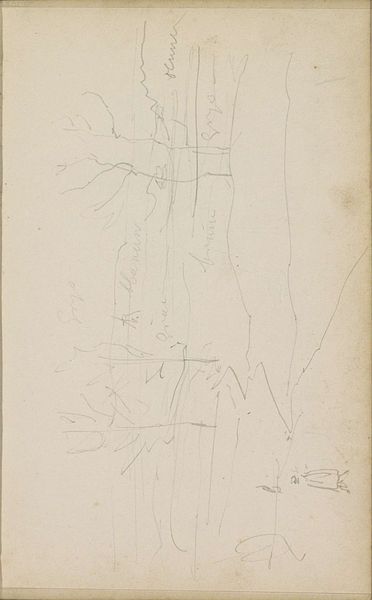
drawing, pencil
#
drawing
#
pencil sketch
#
landscape
#
pencil
#
line
#
academic-art
#
realism
Copyright: Rijks Museum: Open Domain
Curator: We're looking at Johannes Tavenraat's "Hertengewei," created around 1840. It's currently held at the Rijksmuseum. The piece is a detailed pencil drawing of deer antlers. Editor: It's immediately striking how fragile it feels, despite depicting something as inherently masculine as antlers. There’s an elegant simplicity to the composition. Curator: Indeed, Tavenraat's line work is meticulous, rendering the texture and form with a remarkable sensitivity. Notice the academic approach; the precise strokes meticulously capture the specimen’s nuances, embracing a sense of realism. Editor: I’m intrigued by what the choice of pencil signifies here. Was it about accessibility, practicality for fieldwork perhaps, or did the inherent limitations of the material force a deeper engagement with the subject’s skeletal nature? The artwork brings attention to its labor-intensive process as an instructional exercise or as a meditation on the boundaries between art and craft, especially as pencil was not a fine art medium back then. Curator: It's likely both practical and deliberate. Pencil allowed for sketching with a focus on capturing accurate detail which catered towards that time's movement towards Realism in art. The restrained palette reinforces this, prioritizing observation and verisimilitude above any emotional expression. The antlers fill the space and imply a trophy head study from which the entire process begins. Editor: That reading suggests that hunting and the use of animal parts go back to a relationship with nature, and our perception is skewed by what can be used or kept, suggesting ideas surrounding labor and leisure for this landscape drawing. Curator: Certainly, one can read socio-historical implications into the object depicted. However, as a formal study, Tavenraat successfully renders a three-dimensional object on a two-dimensional surface, highlighting volume and structure in its simplest form. The effect allows the viewer to analyze the shape of an antler with careful attention. Editor: It does make one think about what drawing materials meant for both artist and audiences during this time period; a pencil study like this highlights how artwork becomes entwined with economics, class, and social exchange through object relations, not just symbolic representations of it. Curator: I find myself focusing on the stark, almost scientific quality that dominates this representational sketch, and I am glad for our conversation here today! Editor: And for me, the social narrative surrounding animal studies continues to haunt what feels like an artistic endeavor, yet raises many more challenging concerns of labor!
Comments
No comments
Be the first to comment and join the conversation on the ultimate creative platform.
